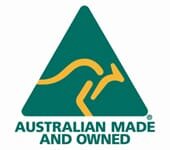The Murray –Darling is under threat. Water continues as a hot topic in Australia and around the globe. It is no longer considered an unlimited natural resource – a fluid manna from the Gods– and in this age of environmental concern and global warming, it has been recontextualised as a precious commodity of limited supply that requires thought, planning and government intervention in relation to equitable water management.
In 2010 The Murray darling Basin authority released a landmark plan in an effort to secure the long-term health of the iconic Murray-Darling river system. The plan is in fact the first phase of a 3 tiered approach aimed at addressing the many and varied issues that have plagued the system for decades.
The Murray darling itself covers over 1 million sq kilometres which equates to 14 % of Australia’s total landmass. It reaches across the majority of states and also includes the nation’s most significant food production region which is heavily dependent upon irrigation for its ongoing survival.
Problems addressed?
While recent rains in early 2011 helped to ease the drought and have flushed parts of the Murray-Darling system, ongoing concerns remain, particularly regarding water allocation and state facilitation and allowance of water removal to support farming, agriculture and other concerns along the system.[1] The plan had hoped to recover between 3,000-4,000 gigalitres of water back to the environment from the allocations, but this has been revised (May 2011) to 2,000 gigalitres after pressure from agriculture groups.
Amanda Young, from Environment Victoria has said the reduction will mean there will not be enough returned water to help with improvement and maintenance of the system’s health. “We’re very concerned,” she said, “because we do not believe that amount will restore economic connectivity of these very, very important sites. The Act clearly states the plan must secure the ongoing future health of the RAMSAR-listed wetland sites.”[2]
RAMSAR listed sites are those that are covered by the RAMSAR Convention on Wetlands – “an intergovernmental treaty that provides the framework for national action and international cooperation for the conservation and wise use of wetlands and their resources.”[3] Wetlands in the Murray Darling Basin are listed in the convention.
In a recent twist, (June 21 2011) irrigators along the system called for the Murrumbidgee Irrigation Board to be sacked because of new MIB contracts that re-allocate water away from the irrigators and back to the board. Scientists from the high profile Wentworth Group, including Professor Tim Flannery have also walked away from discussions concerning the Murray Darling Plan because of the 1,000 gigalitre water revision that Environment Victoria also objected to. Professor Tim Stubbs from the Wentworth Group said that the worse-case scenario is “that in 6 years time when we have another drought we’ll be in the same situation as we are no, and we’ll be seeing the same impacts as we have seen in the recent drought. We will have spent $10 billion. I don’t think it is a good outcome for anyone.”[4]
Time will tell with regards to the final Murray-Darling Basin Plan and outcome later in 2011. In the meantime, Envirosafe Solutions supports the need for prudent and responsible research into and management of what has become one of the globe’s most precious resources. Watertight? We will see….
Telephone Envirosafe solutions for more information on their environmentally friendly products and range. Envirosafe Solutions 1300 889070
[1] http://www.abc.net.au/news/stories/2010/10/06/3030629.htm
[2] http://www.abc.net.au/news/stories/2011/05/27/3228944.htm
[3] http://www.ramsar.org/cda/en/ramsar-home/main/ramsar/1_4000_0_
[4] http://www.abc.net.au/7.30/content/2011/s3224798.htm


































